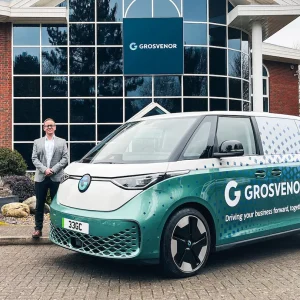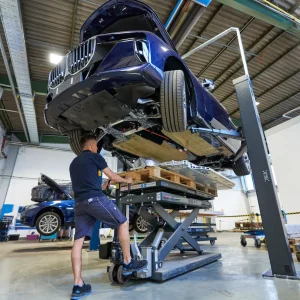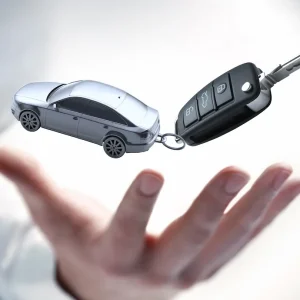
What with Peugeot, Citroen, Vauxhall, DS, Fiat, Jeep, Alfa Romeo, Maserati, Abarth, plus yet more names that don’t figure in the UK market, you might imagine Stellantis had enough brands to be getting on with. But the group is also branching out into areas which, although clearly linked with the operation of vehicles, are not directly involved in their production. Examples of this include the Free2Move mobility brand, and the operation we’re focusing on here, Mobilisights. Launched in January 2023, Mobilisights operates as an independent business unit within Stellantis, and has exclusive access and rights to license vehicle and related data from all the group’s brands. With the number of Stellantis-connected vehicles expected to reach 34 million by the end of this decade, this is clearly going to be a major area of interest in the years ahead.
Mobilisights launched with the stated aim of ‘leveraging’ this data, and when we ask its CEO Sanjiv Ghate what is meant by this, he relates it to the advantages of direct OEM data.
He says: “Fleet management companies or fleet management solutions have historically used aftermarket solutions, things that go into a OBD port, as the primary way of extracting data from a vehicle.
“There is a fair amount of friction associated with that process. Some friction is literally physical, some friction is more about the operational cost of hiring people, [replacing] one dongle [with] another dongle, especially if you are looking at fleet companies – they change cars often, so they could be repeating this process every nine months or so, so there are a lot of issues with that.
“Now that the cars are connected, it is really easier for us to provide the data in a more curated, normalised fashion across our 14 brands, from cloud to cloud. No hardware is needed, you can just get the data.
“Fundamentally we are making the fleet management solutions very, very efficient.”
The Mobilisights offering is described as data-as-a-service.
Ghate says: “If the customer is consenting, whether it is a fleet customer or a consumer using insurance as a service, or roadside assistance as a service . any number of services, we as data-as-a-service are providing that data to enable that service, without involving hardware.”
As Ghate explains, there is a distinction between the service Mobilisights provides, and that of a fleet management company, such as Free2Move, or a non-Stellantis provider such as Geotab, with which Mobilisights announced an expanded agreement last month.
He says: “Mobilisights’ goal is to enable [fleet management services], and let the customer decide which fleet management service they want to use.
“We would obviously be delighted if they use a Stellantis-provided service, but that’s not a limitation as far as providing data goes, and if the customer has an in-house solution, or if the customer already has a vendor that they are using for several years and happy with, then our goal is to make sure that the vendor’s service gets better, because of the natively connected data.”
Ghate explains that Mobilisights’ status as an independent business unit gives it separation from Stellantis control.
He says: “Stellantis cannot tell me to favour partner A over partner B. I get to look at it as an even playing field. If Stellantis has an in-house service versus somebody else, for me they are both equal.”
In addition, Mobilisights even has the freedom to potentially work with non-Stellantis OEMs – although Ghate says this facility has not yet been taken up.
He says: “We have a very strong presence in, let’s say North America and Europe, but if we think that some other partner has a better vehicle density in some other geography, and . we are short of data, short of coverage, the separation allows us to collaborate with other partners, potentially other OEMs, a lot more freely than if we were to be an embedded entity within Stellantis.”
While for now Mobilisights is focused on the direct customer aspect of its data provision, it also has the facility to anonymise the data, which in future, Ghate says, can be used to deliver wider benefits to society.
He explains: “It’s almost like we are collectively crowdsourcing information to make vehicles better, to make the vehicle experience better. We can make roads safer, we can provide hazard warnings, we can provide traffic condition information, we can provide information, collectively again, to say how somebody should be planning new roads, or where infrastructure should be built for electric charging.
“So there is a plethora of information, which is not about you or me, it is really about anonymised aggregated data that can solve all these issues that we have today.
“Today, we are primarily serving fleet and those customers, but we are also building towards the latter, because we see significant societal benefits in creating a better, safer world for all.”
In the immediate future, Ghate is eyeing growth for Mobilisights in several forms.
He says: “One dimension is how many cars we are enabling to link up, and we expect that to grow. The second dimension is really the product dimension. I said earlier that we are branching out into more use cases, those will also include anonymised data use cases.
“In terms of the market, today we are dominantly in North America and mostly Western Europe. We will begin to expand, we have some interesting things happening – in Australia, for example, we have an interesting market that looks more like the US and Europe and UK in terms of the number of connected cars.
“And then finally team expansion – as we have more cars and services we are also expanding as a team.”
As for the UK, Ghate says Mobilisights is active in the market, having been working with commercial and rental fleet customers.
He continues: “We are also looking at some interesting use cases that straddle both
rental as well as actual retail customers, for example, insurance.
“The beauty of having data as a building block [is] you can use the same building blocks to create solutions for different use cases.
“Data allows us that flexibility to really say these use cases require this data, whereas this other use case may require some other set of data, [but] maybe there is a strong overlap between the two.”





